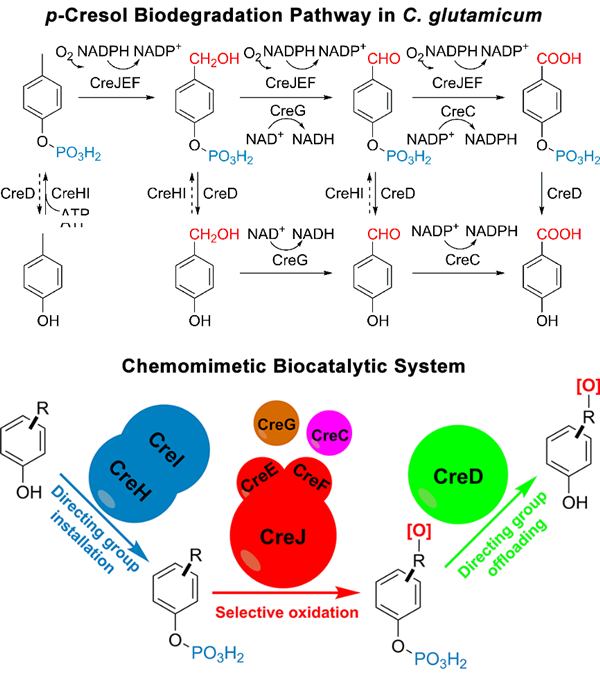
In the daily life, everyone would be troubled by various wastes. These wastes may cause the serous environmental pollution. The utilization of waste has become the hot spot of scientific research.
The Enzyme Engineering Group, directed by Professor LI Shengying at Qingdao Institute of Bioenergy and Bioprocess Technology (QIBEBT) of Chinese Academy of Sciences, together with the research team led by Professor LIU Shuangjiang at Institute of Microbiology of CAS, announced that they found a novel cresol biodegradation pathway in bacterium. This pathway could serve not only in biological degradation of environmentally hazardous compounds, but also in bioactive ingredients of Chinese medicine plants.
Researchers solved the X-ray crystal structure of the central oxidation enzyme. With understanding of the structural basis of this unique enzyme, a biocatalytic system that was able to selectively oxidize a suite of alkylphenols, was successfully developed.
The biocatalytic processes involved various types of oxidative reactions including hydroxylation, dehydrogenation, and carbon-carbon bond cleavage. In particular, absolute stereoselectivity was achieved during the hydroxylation on 4-ethylphenol and 3-ethylphenol. This was extremely difficult to achieve in chemical catalysis.
Furthermore, this chemomimetic biocatalytic system was found to be able to selectively oxidize not only alkylphenols, but also other different alcohols. This showed its great potential in practical application.
This work was published in Proceedings of the National Academy of Sciences of the United States of America and Journal of Biological Chemistry.

Cresol biodegradation pathway and chemominetic biocatalytic sysytem (Image by DU Lei)

86-10-68597521 (day)
86-10-68597289 (night)

52 Sanlihe Rd., Xicheng District,
Beijing, China (100864)

